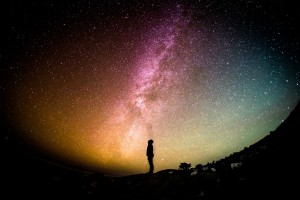
The intricacies of Hindu calendar– Part 3
 By Amit Srivastava
By Amit Srivastava
Astronomy in ancient India
The formation of the Hindu calendar is deeply connected to the Hindu cosmology and the calculation of time. Earlier it was routine by the western historians to brush off the ancient Indian mythology and religious texts as fantasies. But the perception in the West significantly changed following the publication of Hamlet’s Mill: An essay on myth and the frame of time by Georgio de Santillana and Hertha von Dechend on 1969. That ancient myths did encode a vast and complex body of astronomical knowledge, started getting growing recognition.
“The layers or elements covering the universes are each ten times thicker than the one before, and all the universes clustered together appear like atoms in a huge combination.” — Bhagavata Purana 3.11.4
There has now been a vast shift during the last few decades in our understanding of the origin and development of Indian astronomy and its relevance for Indian religion and culture.
Also read: ‘Kshay Maas’ – When a month is dropped from the calendar!
Calendrical calculations in India have constantly been refined through constant observations. Hence extraordinary ways and algorithms got developed here that could trail the true positions of planets, Sun and Moon across the celestial sphere. In India, right from the planetary models as mentioned in Saura Siddhanta meaning “Treatise of the Sun” written by Varahamihira during the Gupta period in present-day Ujjain, astronomers and mathematicians continued to evolve methods to precisely calculate the true position of Sun with respect to the celestial sphere on any given instant at any given day.
Not surprising therefore that India was a centre of attractions for astrologers from faraway civilisations such as that of Persia and Arabia. The basic traditions of Indian astronomy had a strong influence on the science of Mesopotamia, Greece and Iran to something unique to India.
The astronomical treatise like the Surya Siddhanta continue to baffle the modern day scientists no end.
It is a sad commentary on the state of affairs that the Indian calendar and the Indian seasons are not taught in schools and the modern generations have no experience with the traditional Indian calendar. There is a complete lack of knowledge among the present generation regarding the Indian season names as per Indian calendar.
– to be continued





